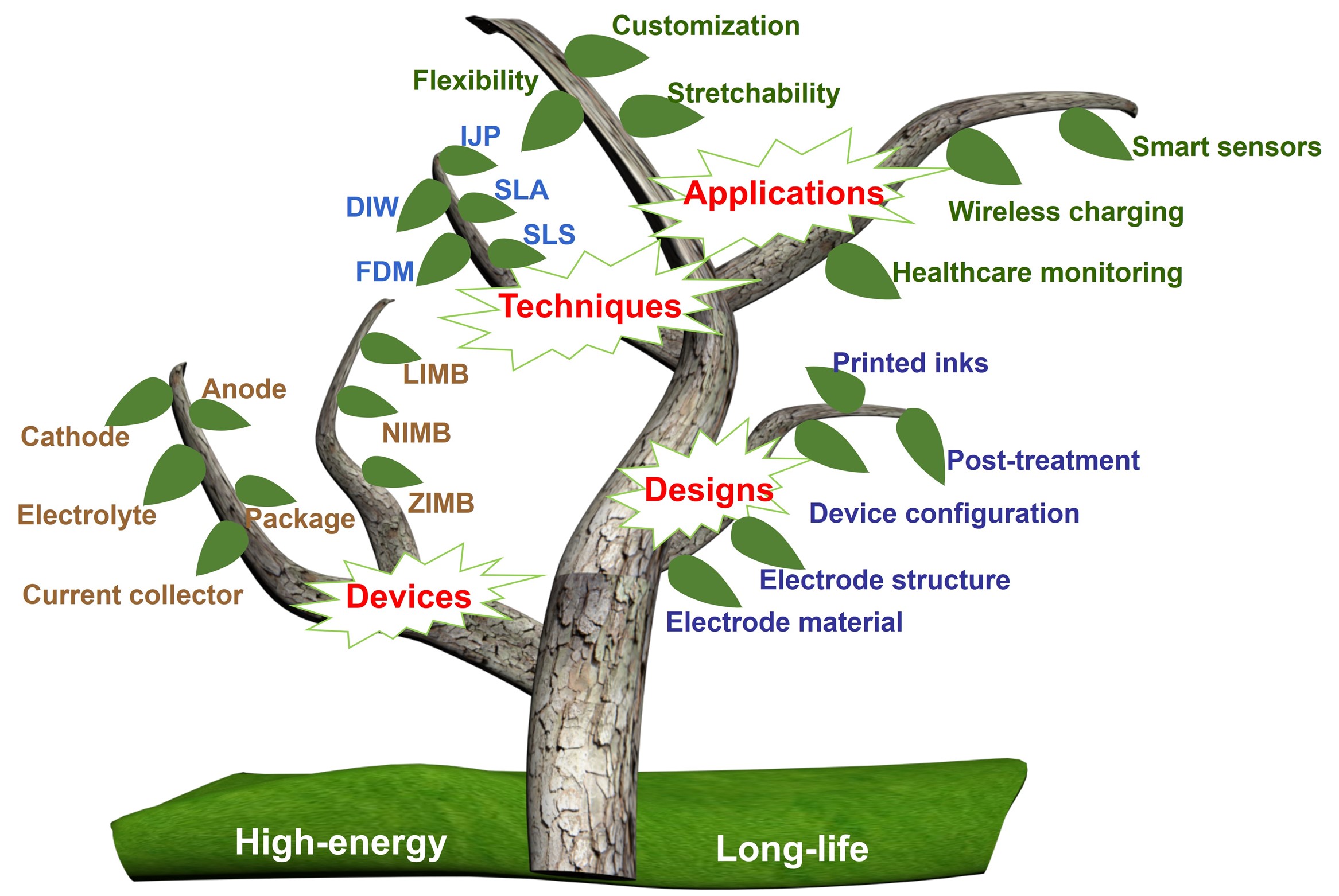J.X. Ma, S.H. Zheng *, Y.H. Fu, X. Wang, J.Q. Qin and Z.-S. Wu *
Chemical Science, 2024, Accepted.

In the era of Internet of Things and wearable electronics, 3D-printed micro-battery with miniaturization, aesthetic diversity and high aspect ratio, has emerged as a recent innovation, which solves the problems of scare design diversity, poor flexibility and low mass loading of materials associated with traditional power sources restricted by the slurry-cast method. Comprehensive understanding the rational designs of 3D-printed materials, inks, methods, configurations and systems is critical to optimize the electrochemical performance of customizable 3D-printed micro-batteries. In this review, we offer a key overview and systematic discussion of 3D-printed micro-battery, emphasizing the close relationship between printable materials and printing technology, as well as reasonable design of inks. We initially compare the distinct characteristics of various printing technologies, subsequently emphatically expound the printable components of micro-battery and general approaches to prepare printable inks. After that, we focus on the outstanding role of 3D printing design in device architecture, battery configuration, performance improvement, and system integration. Last, the future challenges and perspectives concerning high-performance 3D-printed micro-battery are adequately highlighted and discussed. This comprehensive discussion aims at providing blueprint for the design and architecture of next-generation 3D-printed micro-batteries.
